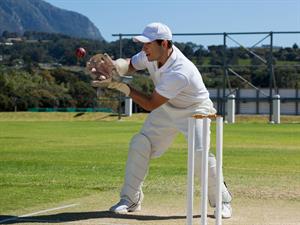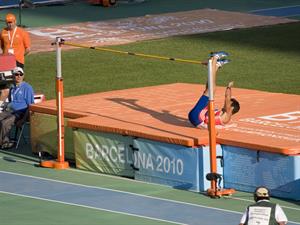PDF chapter test TRY NOW
1. A fielder in the cricket ground pulls his hands backwards with the fast-moving cricket ball during the action of catching. By this action, the fielder prolongs the time to decrease the velocity of the fast-moving ball to zero. Hence, the impact of catching the fast-moving ball is reduced by decreasing the acceleration of the ball.

If the fielder suddenly stops the ball, its high velocity drastically decreases to zero in a very short period.
As a result, the rate of change of momentum will be large, and thus, a large force should be exerted for taking the catch that may hurt the fielder's palm.
2. Athletes in high jump sporting events are forced to land on a cushioned or a sand bed. This is done to prolong the time it takes for the athlete's fall to come to a halt after completing the jump. An increase in the time of fall reduces the force by lowering the rate of change of momentum.

3. With the same technique, a karate player breaks an ice slab with a powerful single blow.

From the second law's mathematical expression, the first law of motion can be easily stated.
When the force F is zero, the final velocity is equal to the initial velocity (v =u), whatever the time t may be.
Hence, it implies that the object will continue its motion with uniform velocity, u throughout the time, t. If u is zero, then v will also be zero, keeping the object at rest.
Reference:
https://image.shutterstock.com/z/stock-photo-barcelona-july-european-athletics-championships-barcelona-decathlon-high-jump-in-the-58176451.jpg - Photography by Natursports
